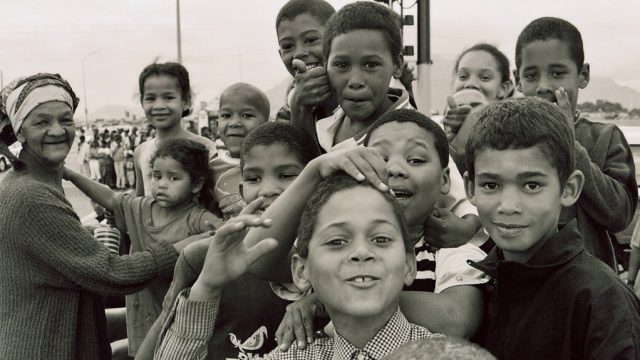Classified as “coloured” by the apartheid government, people of mixed black, white and/or Asian heritage have long lived in South Africa as a distinct group with a diverse culture and history. Here are 10 things you might not know about post-apartheid coloured culture.
This article originally appeared on AFKInsider.com.
1. Science tells us a bit more …
Mitochondrial DNA studies show that female members of the coloured group of people are mostly of Khoisan ancestry. The origin of the coloured population in South Africa can be traced to sexual interaction between Western European males and Khoisan females in the 17th century in the Cape Colony. However, coloured people have some of the highest levels of mixed ancestry in the world including European, Asian, and various Khoisan and Bantu heritages.
Source: en.wikipedia.org
2. Coloured is not a race or a color
Being coloured is not a determination based on skin color or race. The group of people are of mixed ancestry which did not fit in to the black, white or Indian classifications during apartheid and were combined together as a separate classification, although their heritage is incredibly diverse. In South Africa today, those considered black make up about 80 percent of the population, whites make up about 10 percent of the population, coloured people make up about 8 percent of the population and the Indian population constitutes 2 percent. None of these groups of people is considered homogenous.
Source: www.sahistory.org.za.
3. Coloured people speak English and Afrikaans
Afrikaans is spoken by 950,000 coloured people. Coloured people have created a distinct dialect used in informal settings which is a mixture of English and Afrikaans, heard often in humor and songs.
Source: www.news24.com, www.encyclopedia.com
4. Coloured is not always considered an ugly word, although the term is hotly debated
In the beginning of racial segregation in South Africa by the white minority, when individuals were classified as coloured, people did not necessarily self-identify as coloured. Some preferred to be characterized as black, khoisan or simply South African. During apartheid, the group began to self-identify as coloured because individuals classified as coloured had some advantages over black South Africans. For example, coloured individuals were not required to carry the same documents limiting movement of the black population. Those classified as coloured were still very much disadvantaged under the apartheid regime. Today, coloured is a widely used term in South Africa. Although the use of the term is debated, it doesn’t carry the same connotation as the word does in most other parts of the world. Many coloured people hate the term while simultaneously describing themselves as coloured with pride.
Source: en.wikipedia.org.
5. Coloured people supported both the ANC and the National Party
Coloured people have had an important role in politics since 1994. The African National Congress had substantial coloured support before, during and after apartheid. However, the fear of ANC policies caused many coloured voters to help put the National Party in power in the Western Cape Provincial Parliament in 1994 for a short period. The predominance of the use of the Afrikaans language among the coloured population was another reason the National Party once attracted coloured voters.
Sources: en.wikipedia.org, www.sahistory.co.za.
6. Some coloured people still feel subject to discrimination, now in a different form
In post-apartheid South Africa, coloured people are considered black and therefore are protected under the Employment Equity Act, yet some feel discriminated against for not being black enough.
Source: SAHistory
7. Religion is important in the coloured community
The coloured population observes two main religions, Christianity (mostly in the form of Protestantism and Catholicism) and Islam, which plays a prominent role in coloured communities. It is not uncommon to hear Muslim prayer summons in areas highly populated by coloured people. Practicing coloured Muslims take great interest in Middle Eastern events.
Source: www.encyclopedia.com
8. Coloured communities have festive and elaborate celebrations
The coloured community has an enormous presence in the Kaapse Klopse — the Cape Town Minstrel Carnival — an extravagant and popular street party in Cape Town. Participants wear bright colors, carry umbrellas and play instruments celebrating the new year. Coloured people are well known for their skills in crafts and woodworking and their unique cuisine such asbredies (stew made with mutton and vegetables), samoesas (small ground beef pies seasoned with curry) and koeksisters (syrupy, braided and fried dumplings).
Sources: en.wikipedia.org, everyculture.com
9. The coloured community is tight knit
Individuals in the coloured community often defend one another and will provide for those in need within the community regardless of their own positions. Members of the community are bonded and feel a great sense of solidarity. The coloured community is involved in researching its cultural heritage and developing its own unique self identity in the new, open society. Source: www.strategyleader.org.
10. South Africa is a rainbow nation
Regardless of any contentious classification, there is a reason South Africa is considered the rainbow nation. The name is a source of pride for South Africans from a wealth of diverse backgrounds living in the 20-year-old democracy.
Want to discover the finer side of Africa? Sign up for our weekly newsletter.

